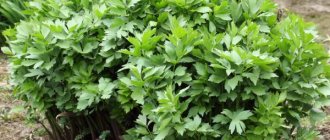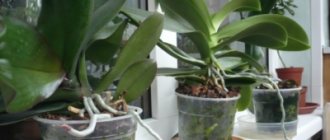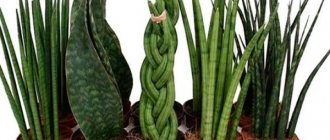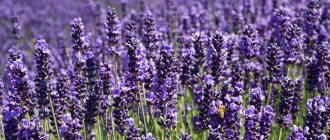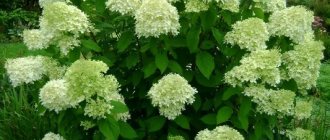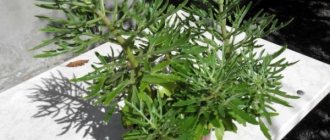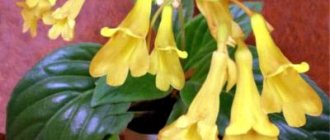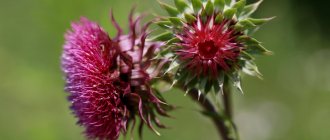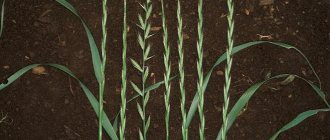The lavender bush (Lavandula) is a member of the Lamiaceae family. This genus includes approximately 30 species. Under natural conditions, it can be found in North and East Africa, Arabia, southern Europe, Australia and India. In each country, only 2 types of lavender are cultivated, namely: medicinal lavender, either narrow-leaved or English, and also French or broad-leaved lavender. The name of the shrub was derived from the Latin word “lava”, which translates as “to wash”; the fact is that in the Ancient world it was used by the Greeks and Romans for washing and washing. Today, lavender can be found not only in the garden; it is also grown on an industrial scale as a valuable essential oil crop.
Brief description of cultivation
- Landing . Seeds for seedlings are sown in February–March, in open ground in October, while seedlings are transplanted into open soil in the last days of May or the first days of June.
- Bloom . It begins in the middle of summer.
- Illumination . Needs plenty of bright sunlight.
- Soil . It should be dry, well permeable to water and air, loamy or sandy with a pH of 6.5–7.5.
- Watering . Lavender must be watered systematically and abundantly. During a prolonged dry period, the frequency of watering is increased.
- Fertilizer . Fertilizing is carried out twice during the growing season. In the spring, a complex mineral fertilizer with a high nitrogen content is applied to the soil, and in the fall, a phosphorus-potassium fertilizer is applied.
- Hilling up . Old plants need to be hilled up twice a season; this is done in spring and autumn.
- Trimming . When the bush fades, all its inflorescences are removed, and in the autumn the branches are shortened. After the plant is 10 years old, it is rejuvenated by cutting off all branches at a height of 50 mm from the ground surface.
- Reproduction . By seed method, as well as by cuttings, layering and dividing the bush.
- Harmful insects . Leafhoppers (slobbering pennies), rainbow beetles and aphids.
- Diseases . Gray rot.
Selection of location and conditions of detention
Let's find out what conditions need to be provided for lavender when keeping it in open ground.
Lighting and location
Lavender does not require light. Its bushes grow and develop well both in the sun and in the shade. But the shrub is grown mainly for the abundance of fragrant inflorescences. But for them it is very important to have direct sunlight throughout the day. Therefore, the best place for lavender is an area that is well lit from all sides. Early morning sunlight is especially important for her.
Temperature
Lavender prefers to grow at a temperature of +15...+20 oC. However, it easily tolerates daytime heat up to +40 ° C if it is watered abundantly. In winter, the shrub can withstand frosts down to -25...-20 °C. Therefore, in central Russia, in the Moscow region and northern regions of the country, it needs winter shelter.
Air and humidity
Lavender needs moderate air humidity. It does not tolerate close groundwater and stagnation of moisture in the soil. Therefore, it is better to plant it in well-drained, loose and elevated areas. Since the plant is afraid of drafts, it is important to ensure there is a barrier to the wind. This could be a blank fence, the walls of a house or dense garden bushes.
Priming
Lavender needs loose, light, well-permeable soil with a neutral or alkaline reaction. It grows especially well in peat-sandy areas with the addition of a large amount of material that alkalizes the soil. The shrub responds well to the presence of ash, lime and dolomite flour in the soil. You can add crushed eggshells to the soil, which also neutralizes acids, but its effect is extended over time (as it decomposes). But the plant cannot tolerate places with an abundance of humus, since excess nitrogen is detrimental to it.
Features of lavender
Lavender is an evergreen perennial shrub whose roots are fibrous and woody and can reach a depth of about 200 centimeters into the soil. It has many stems, reaching a height of about 0.6 m, which become woody in the lower part. The oppositely sessile leaf plates have a linear shape and a greenish-silver color, with soft pubescence on their surface. Fragrant flowers are collected in interrupted spike-shaped inflorescences of 6–10 pieces in whorls; they are colored lilac-blue or blue. Inflorescences are formed in the upper part of leafless shoots. Lavender begins to bloom in mid-summer. This plant is considered an excellent honey plant. If its seed material is stored correctly, then it will have excellent germination even after many years. This shrub is considered a relative of the following crops: hyssop, basil, mint, lemon balm, motherwort, oregano, sage and rosemary.
LAVENDER - cultivation, care, planting, watering, reproduction, flowering, features
Care
Caring for the plant is quite simple and does not require any complex procedures. The main thing in it is strict compliance with the necessary conditions for keeping the plant, timely watering and fertilizing.
Watering
Watering lavender is carried out daily at the same time of day.
It could be morning or evening. In this case, it is necessary to use only boiled water or water that has stood for several days at room temperature. Do not overwater the plant. The main thing when watering lavender is to keep the substrate in the pot slightly moist.
Half an hour after watering, it is necessary to remove the remaining water from the pan. Once every 3-4 days, it is advisable to loosen the soil using some tool to a depth of 2-3 cm over the entire surface of the pot within 5 minutes after adding moisture. In this case, it is advisable not to use wooden sticks or pegs to avoid introducing a fungal infection into the pot. It is better to use plastic for this purpose.
Young plant in a stationary pot
In winter, the frequency of watering should be at least 1 week . In this case, the top layer of soil is only slightly wetted and loosened.
Fertilizer application
You can start feeding the plant from the very first weeks after planting the seeds in the ground. Starting from 3-4 weeks, small plants need to be fed once a week with liquid fertilizers containing potassium salts with a concentration of 2 g per 1 liter of water. These fertilizers are applied before transplanting the plant into a stationary pot.
Adult plants are regularly fertilized during flowering and after pruning
It is also advisable to apply fertilizers in early spring. In this case, you should remember the following rule: lavender tolerates organic nitrogenous fertilizers very poorly.
During the season, the plant needs two fertilizing with mineral nitrogen fertilizers: at the beginning of the period of active growth and after the plant has flowered and has been pruned. At other times, it is not recommended to apply nitrogen fertilizers.
The budding period requires the application of potassium or complex mineral fertilizers . These fertilizers are applied once a week in the doses indicated on the fertilizer packaging. About two weeks before the end of the flowering process they are stopped. And the second fertilizing with nitrogenous fertilizers is carried out no earlier than three weeks after the cessation of potassium fertilizing carried out during flowering.
About a month after applying the second batch of nitrogen fertilizers, you can apply a small amount of wood ash under the plant to lim the soil to correct possible acidification of the soil. It is enough to add about a quarter cup of ash to one pot.
Plant pruning
This procedure is important for lavender because it has a fairly fast growth rate of its green part. In fact, pruning is divided into three stages: spring, summer and autumn.
The main pruning is done in the summer, at the end of flowering.
It is done using ordinary garden shears. With it, branches that have small sprouts on the sides are cut off. Cutting the shoots must be done to the level of these sprouts. In this case, flower buds are guaranteed to form on the branches.
Also, when pruning in summer, it is necessary to trim off the bending stems of the plant. They should be shortened to the lowest shoot. Naturally, when pruning in summer, you need to rid the plant of diseased and dry shoots.
In fact, summer pruning is already a harvest of lavender in the form of flowers and large shoots that did not produce flowers this season . It is best to carry it out 2-3 weeks before the end of flowering - it is during this period that the concentration of essential oils in the plant is maximum.
However, sometimes it is recommended to stretch out the process of summer pruning a little over time. It begins with cutting off the branches that have already fully blossomed, and when all the flowers are cut off, at the end of flowering, the vegetative part is pruned.
Spring pruning is done in late March-early April. Its main purpose is sanitary and in its essence it resembles cleaning. At the same time, dry, rotten and broken branches are removed. Spring pruning can also be done in two stages - first, unproductive shoots are removed, and then, after about a month, decorative pruning is performed, with the goal of forming the crown of the plant.
Autumn pruning consists of the final removal of faded stems. They must be cut down to the level of the first shoots from the root.
In addition, specialized pruning is performed every 3-4 years, with the goal of rejuvenating old bushes. It must be carried out because lavender loses its aesthetic properties over time: old woody shoots become bald, and practically no new buds or flowers appear on them.
Lavender pruning
In order to help the plant cope with this problem, it is necessary to carry out anti-aging pruning at the beginning of spring, during sanitary pruning. Its essence lies in pruning old shoots (more than 4 years old) to the very root . This procedure is designed to stimulate the formation of a new stem on the root collar in place of the old shoot. As a rule, it will appear this year.
If young shoots do not appear in place of old shoots, it means that the plant has completely degenerated, that is, its life has come to an end, and it requires replacement.
Some gardeners recommend completely depriving the plant of its foliage during the dormant period, leaving only woody shoots a few centimeters long above the surface of the pot. This approach is not something special, since this is how lavender overwinters in the garden. The only question that arises at this stage is the aesthetic beauty of the plant in winter.
If during this time you want the plant to rest completely, and its aesthetic qualities do not interest you, you can do it this way.
Drying the crop
The flowers and shoots of plants obtained as a result of summer pruning require preliminary treatment, which consists of drying them and storing them for further use. Drying is done in a well-ventilated room, where cut lavender spikelets hang flowers down, previously tied into bunches.
Lavender harvest
After about a month of drying, the resulting material is stored in linen bags made from fabric of natural origin.
To prevent moisture from accumulating, these bags should also be stored in a suspended state.
Growing lavender from seeds
Planting in open ground
Lavender seeds can be sown directly in open ground before winter, or more precisely in October. If you grow it through seedlings, then the seedlings are planted in the garden in the last days of May. If you decide to grow such a shrub from seeds, then you need to purchase them in advance, or rather, in the first weeks of winter or early autumn. The fact is that before you start sowing the seeds, they need to be prepared. To do this, the seed material is stratified for two months at a temperature of about 5 degrees, which significantly increases its germination. To do this, the seeds must be combined with moistened sand and placed on the refrigerator shelf intended for vegetables. Sowing seeds for seedlings is carried out in February–March.
Sowing seedlings
The container intended for sowing lavender must be filled with a pre-prepared substrate, which should include coarse river sand and humus (1:2). Since the seeds of such a plant are very small, the finished soil mixture should be sifted, which will help remove all lumps from it. Then the substrate is disinfected, for this it is spilled with a rich pink solution of potassium permanganate or calcined in the oven at a temperature of 110 to 130 degrees. A drainage layer is first laid at the bottom of the box, which has holes for drainage, after which it is filled with the prepared substrate.
Stratified seed material is evenly distributed over the surface of the soil mixture, after which it is sprinkled with a three-millimeter layer of sand. Moisten the crops with warm water from a spray bottle and cover them on top with transparent film or glass. Place the box in a warm and well-lit place. Crops need systematic ventilation; for this, every day you need to briefly raise the shelter. In order for seedlings to appear, crops must be at a temperature of 15 to 22 degrees.
Seedling care
Immediately after the seedlings appear, they need to be regularly illuminated, otherwise they will stretch out very quickly. The plant must be accustomed to new growth conditions gradually. To do this, you need to remove the shelter for a while every day, and the duration of the procedure should be increased gradually. Immediately after the seedlings get used to the new growing conditions, the shelter can be removed altogether. After this, the lavender must be planted in a larger box so that the distance between the bushes is at least 50 mm.
Growing LAVENDER seedlings from seeds
Planting in open ground
Seedlings are planted in open soil in the last days of May. Often this shrub is used to decorate alpine slides, to create borders, or it is planted on both sides of paths. The culture grows well in open sunny areas. Since lavender reacts extremely negatively to excess moisture, it is not recommended to choose an area with a high level of groundwater or wetlands for planting it. Dry sandy loam soil is perfect for growing it, but it also grows quite well in well-drained loamy soil. The recommended pH of the soil on the site is 6.5–7.5. If the soil is acidic, then crushed limestone should be added to it.
Before planting, the area should be thoroughly prepared. To do this, it is dug up to a depth of at least 0.2 m, and then the soil is well loosened, for this purpose compost or peat is added to it.
When planting seedlings of vigorous varieties, a distance of about 1.2 meters is maintained between the bushes. When planting seedlings of other varieties, the distance between plants should be from 0.8 to 0.9 meters. The planting hole is made so deep that the bush’s root system can fit into it. Before planting the seedling, its roots need to be trimmed a little, after which the bush is placed in a hole and covered with earth. After planting, the root collar should be buried 40–60 mm into the ground. Planted seedlings need abundant watering.
Pre-winter sowing
In regions with a mild climate and warm winters, it is recommended to sow seeds directly into open ground. Sowing is carried out in October in a previously prepared area. To do this, they dig it up and at the same time add peat to the soil. If the soil is excessively wet, this can be corrected by adding sand or fine gravel to it, which will increase its drainage properties. The seeds are buried 30–40 mm into the soil, after which the surface is slightly compacted. If the autumn turns out to be dry, the crops are watered moderately. When the first snow falls, they should cover the surface of the area so that the result is not a very large snowdrift.
Sowing Lavender before winter
Planting lavender in open ground
When to plant
Lavender is planted in the ground either with seeds in October or seedlings at the end of May. In order to grow lavender from seeds, seed material should be purchased at the beginning of winter or autumn, since before sowing in the ground, the seeds are stratified for 2 months at a temperature of 5 ºC to increase germination. Typically, seeds mixed with wet sand are stratified in the vegetable drawer of the refrigerator. Sow lavender seeds for seedlings in February or March.
- The best varieties of white rose
Seedling care
While the seeds are in the refrigerator, prepare a container for sowing and a substrate for the seeds by thoroughly mixing two parts of humus with one part of coarse river sand. Sift the mixture - lavender seeds are very small, so the substrate should not contain any lumps - and bake it in the oven at a temperature of 110-130 ºC or pour it with a bright pink solution of potassium permanganate. Place the treated soil mixture in a growing container with drainage holes on a drainage layer.
In the photo: Lavender blooming in the field
At the very end of winter or at the beginning of spring, sow lavender seeds on the surface of the substrate in a container, sprinkle them with a 3 mm thick layer of sand, spray them with warm water from a spray bottle, cover them with glass or plastic wrap to create a greenhouse effect and place them in a bright, warm place. From time to time, crops need to be ventilated by lifting the cover. Seeds are germinated at a temperature of 15-22 ºC.
How to grow lupine in the garden - a beautiful flower and green manure
How to care for lavender during the seedling period? As soon as the seedlings appear, you will have to provide them with additional lighting so that the lavender seedlings do not stretch out. Remove the covering every day for a while so that the seedlings get used to the temperature in the room, and as soon as they adapt to it, the film can be removed completely and the seedlings can be planted so that the distance between them is at least 5 cm.
How to plant in the ground
At the end of May, it is time to plant lavender in the garden. Most often, lavender is used to decorate alpine slides, use it as a border, or plant it on both sides of paths. Lavender grows well in bright sun. Do not plant it in wetlands or areas with high groundwater levels, as lavender is very sensitive to excess moisture. The plant prefers dry, sandy soil, but also grows well on loamy soils with good drainage.
The optimal acidity level for the plant is 6.5-7.5 pH. Ground limestone will have to be added to acidic soil. Before planting lavender, you need to prepare the area: dig up to a depth of at least 20 cm and loosen the soil well, adding peat or compost for digging.
How to plant lavender? Lavender is planted with a distance of 80-90 cm between seedlings, and a distance of 120 cm is maintained between bushes of tall lavender. The depth of the hole should be such that the root system of the seedling can freely fit into it. Before planting, the roots are slightly trimmed, then the lavender bush is placed in the hole and buried, deepening the root collar by 4-6 cm. After planting, the lavender seedlings are watered abundantly.
In the photo: Growing lavender in the garden
Pre-winter sowing
In areas with warm winters, it is better to sow lavender seeds directly into the ground. This is done in October, after they have prepared the soil on the site by adding peat for digging, and if the soil is too wet, then fine gravel or sand is added to it to increase moisture and air permeability. Seeds are sown to a depth of 3-4 cm, slightly compacting the soil surface after sowing. If autumn is dry, water the crops, but not too much, and with the first snow, throw a small snowdrift over the area.
Caring for lavender in the garden
After the first inflorescences form on the lavender seedlings, it is recommended to tear them off. Thus, young bushes will not waste their energy on forming flowers, but will be able to grow stronger and form a powerful root system. After planting lavender in the garden, during the first season it grows extremely slowly; therefore, you need to regularly pull out weeds, as they can choke out young shrubs.
In addition, the bushes will need to be systematically pruned and also fed. At the same time, it is recommended to use potassium fertilizers for fertilizing. The fact is that nitrogen fertilizers and manure promote the active growth of green mass, and this negatively affects flowering.
Watering and hilling
In order for lavender to grow and develop well, it needs abundant, systematic watering. On hot days, the frequency of watering is significantly increased. Every time after it rains or waters, loosen the surface of the soil between the plants and remove all weeds. In order to significantly reduce the amount of weeding, loosening and watering immediately after the seedlings are planted in open soil, the surface of the earth between them is covered with a layer of mulch (peat).
Old shrubs always mount high in spring and autumn. Thanks to this, new shoots will be able to form on old branches.
Trimming
This shrub requires systematic pruning, which is carried out every year. Immediately after the bush has faded, the inflorescences that have begun to fade are cut off, and in the autumn the branches are shortened to give the lavender a neat shape. Make sure that it does not stretch too far upward, as powerful gusts of wind can cause the bush to fall over, as a result of which it will lose its decorative effect. After the age of the plant is 10 years or more, if necessary, anti-aging pruning can be carried out; for this, all branches are cut off, leaving only sections about 50 mm long. This type of pruning can also be done on younger shrubs if they bloom very sparingly.
Autumn pruning of lavender
Description of the plant
The perennial lavender flower is an evergreen shrub with narrow decorative silvery leaves and flowers collected on spikes. The plant in the garden looks very decorative, caring for it is not difficult. Her presence will definitely ensure that butterflies and bees visit the garden. It is very important that thanks to these insects it is possible to increase fruit yield. Below are the most important rules for growing an aromatic plant.
Lavender blooms from June to October. The plants have a compact bush and grow to a height of 45-50 centimeters. A neat bush shape can be achieved by proper pruning. In landscape design, the bush is used for:
- framing paths, beds;
- landscaping terraces and balconies;
- garden decorations.
Lavender goes well with roses and can also be grown in a pot. The intense smell of the plant attracts bees, bumblebees, butterflies and repels mosquitoes and aphids.
Not all varieties of lavender can withstand harsh climates and cold winters. The plant is usually grown in the southern regions. When planting and growing lavender in the Leningrad region and Moscow region, you should take care of good winter shelter. According to reviews from flower growers, lavender can be grown in the Urals and Siberia, but in these regions the shrub often freezes, so it is guaranteed to be better grown as a potted plant. In Siberian conditions, lavender should be opened from its winter shelter after May 15th. A week after opening, the plant will begin to produce green buds, provided the weather is warm.
Reproduction methods
Lavender can be grown from seeds, and also propagated by layering, dividing the bush and cuttings. How to grow it from seeds is described in great detail above.
Propagation by cuttings
This propagation method is suitable for those who already have lavender on their site or have the opportunity to get its lignified annual shoot. The stem is cut into lengths from 80 to 100 mm. The resulting cuttings are planted for rooting in a loose, moistened substrate, while their lower cut is buried by approximately 20–30 mm. They are covered with transparent glass jars on top. It will be possible to remove the shelter only after the roots of the cuttings grow.
Dividing the bush
To propagate the crop, the method of dividing the bush is also used. However, the plant should be prepared for this procedure. Select a mature, overgrown shrub. With the onset of autumn, when it fades, it should be pruned to a height of about 10 centimeters, after which it is hilled high, trying to fill the entire space between the stems with soil. In spring, the plant is hilled again. Throughout the summer, the bush produces abundant growth.
With the onset of autumn, the bush is removed from the ground and divided into several parts with well-developed roots and stems. Next, the divisions are planted in a new place in separate holes.
Reproduction and planting of lavender
Reproduction by layering
To propagate the shrub by layering, in spring you should select several stems, bend them and place them in grooves 30 to 40 mm deep, made in the soil near the plant. Fix the shoots in this position, cover them with soil and water well. During the summer period, make sure that the soil above the layering is always slightly moist. It is possible to separate the cuttings that have given roots from the bush only with the onset of the next spring. Next, the cuttings are dug up and planted in a permanent place.
Wintering
After autumn sanitary and formative pruning, the bushes must be treated with a 0.2% Fundazol solution. Then, when light but stable frosts set in, they are covered with spruce branches. The advantage of this insulation is that the plant underneath continues to breathe. And air ventilation prevents the formation of rot. The smell of resin repels rodents, so the lavender will remain safe and sound. It will survive the winter better if you cover it with a large pile of snow in winter.
Advice! With the onset of above-zero temperatures during the day in spring (around March), all snow will need to be removed from the shelter so that the bushes underneath do not dry out.
Pests and diseases of lavender
When grown in open soil, lavender is very resistant to harmful insects and diseases. However, problems can arise with it too. In some cases, the bush is affected by gray rot, or rainbow beetles or slobbering pennies (leafhoppers) settle on it.
If pests have settled on the bush, you can get rid of them by collecting insects manually. Then be sure to replace the mulching layer under the bush. The development of gray rot is facilitated by regular stagnation of liquid in the soil, which can be caused by excessively frequent and very heavy watering or prolonged rains. This disease cannot be treated, so it is recommended to dig up and destroy the affected bush. If the disease is at the initial stage of development, then you can try to save the lavender; to do this, immediately after detection, all affected parts of the bush are cut out. And then the watering regime must be adjusted.
Overwintering lavender
Before overwintering the plant in the field, shelter should be provided. At the same time, according to experts, lavender tolerates frost well even at short-term temperatures of -25 ° C. If the region experiences long periods with temperatures around this mark or even drops below it, then high-quality shelter will be needed. Don't forget that winters can be rainy. It’s better not to give up the canopy. At the end of the transition season, the bushes are pruned. Branches of coniferous trees are placed in the garden as insulation. Leaves are not suitable, because this can cause rotting processes in the lavender bush. Thanks to compost mulch, loosening, weeding, and fertilizing will be avoided. This will make maintenance easier. You only need to prune the plant so that it strengthens and then blooms profusely.
Growing in the Moscow region and Moscow
Lavender angustifolia (medicinal or English) grows best in Moscow and the Moscow region. It is necessary to plant it in the ground and care for it in average conditions in the same way and almost at the same time as in warmer regions. Sowing seeds directly into open soil is carried out from mid to late May, immediately after return frosts are left behind. Seedlings are planted in open ground in the first days of June. It is not recommended to sow seeds before winter, because there is a high probability that they will freeze.
Wonderful lavender: planting and care in different regions
In the Moscow region, flowers are grown using seedlings. It is transferred to the garden bed at the beginning of summer. In autumn, woody stems are removed. For the winter period, shelters are built from spruce branches.
Lavender also grows in the surrounding areas of St. Petersburg; planting and caring for the plant have their own characteristics. It is not advisable to sow seeds in beds in late autumn. Due to severe frosts, they will not survive until spring. Plants thrive at higher elevations, where there is enough oxygen and light.
For the northern regions of the Urals and Siberia, only frost-resistant varieties of lavender are suitable. Seeds must be stratified. Before planting in a flowerbed (in June), the seedlings are gradually hardened off. During the warm season, the soil is fed. Pruning is carried out in autumn and spring.
Despite the fact that lavender is a heat-loving crop, even in cold latitudes it can delight people with its beauty. The main thing is to properly prepare the site, plant it on time, fertilize the soil, prune it and equip it with shelter for the winter.
Delicate and fragrant lavender inflorescences continuously decorate garden plots, alpine hills and flower beds. And the dried spikelets of the plant fit wonderfully into the home interior. Its intoxicating aroma has a beneficial effect on sleep. In case of irritation, relieves tension. Miniature bouquets repel insects. Alcohol tinctures are used to treat colds. It's good to always have lavender on hand.
Types and varieties of lavender with photos and names
Today, gardeners cultivate only broadleaf and angustifolia lavender. Below we will also describe those types of lavender that can also be grown in your garden.
French lavender (Lavandula stoechas)
Or broadleaf lavender (Lavandula latifolia). The homeland of this species is South-West Europe. The scent of the spectacular lavender flowers is very strong; they can be colored in various shades of pink, green, white, purple, lilac or burgundy. This lavender blooms somewhat earlier than other types, and this happens in April–May. Flowering ends in July, but sometimes in the last summer weeks the bush blooms again. Compared to narrow-leaved lavender, this species is not as frost-resistant; therefore, it is cultivated mainly in regions with warm and mild climates. The most popular variety among gardeners is Lavandula stoechas pedunculata, or “butterfly” (Papillon): the flowers of this shrub have an unusual, spectacular shape. The best varieties of lavender are:
- Yellow Vale . The foliage of the shrub is greenish-yellow, the flowers are dark purple, and the bracts are crimson.
- Regal Splendur . The flowers are dark purple.
- Rocky Road . This variety appeared relatively recently. Its large, bluish-purple flowers open in July.
- Tiara . The bracts of the large blue flowers are cream colored.
- Helmsdale . The flowers are burgundy-lilac.
Lavender hybrid (Dutch)
This group of highly decorative hybrids was created using English lavender and other species of the genus. Such a large shrub is decorated with narrow silvery leaf plates, as well as large oblong flowers located on long peduncles that bend under their weight. It blooms in July. The best varieties include:
- Alba . The flowers are painted white.
- Arabian Knight . The color of the flowers is dark purple or dark blue.
- Sawyers . The color of the flowers is pale lilac.
- Grosso . Large beautiful flowers are colored lilac-violet.
- Richard Gray . The compact bush is decorated with dark purple flowers.
Toothed lavender (Lavandula dentata)
This species is native to the Mediterranean. It is a compact shrub that is thermophilic. The silvery leaf plates are rugged and soft. Flowering occurs in July, during which large fragrant flowers open. The species is not highly resistant to frost. The most popular variety among gardeners is Royal Crown: the flowers are purple.
Lavender angustifolia (Lavandula angustifolia)
Either English lavender (Lavandula spicata) or medicinal lavender (Lavandula officinalis). This shrub is native to Southern Europe. This perennial is decorated with greenish-silver foliage and small lilac-blue flowers. Flowering begins in July–August. This species differs from others in that it has the highest resistance to frost. The most popular variety of this shrub is delphinium lavender: the height of the bush is no more than 0.3 m, it is decorated with very impressive silver-colored leaves. Hidcoat lavender is also widely cultivated, most often it is used to create not very high hedges. The best varieties include:
- Alba . Half-meter bushes are decorated with white flowers.
- Rosea . A low shrub, reaching a height of about 0.4 meters, forms mauve inflorescences during flowering.
- Manstead . Bright blue flowers bloom on a bush that reaches a height of 0.4 meters.
- Hidcoat Giant . The height of such a compact shrub is approximately 0.6 m.
- Hidcoat Blue . Purple-blue flowers adorn the compact plant, which reaches a height of about 0.4 m.
Lavender rules
Uses of Lavender
Lavender flowers develop in June and the plant can bloom continuously until October. This shrub has many qualities - decorative and practical. The cut spikelets are dried in a dark, ventilated place.
Application options:
- dried bouquets will decorate the interior of rooms, especially those decorated in Provence and shabby chic styles;
- the aroma of lavender calms, relieves stress, helps to sleep;
- infusion of flowers has disinfectant properties and is used to rinse the mouth and throat;
- bouquets of dried spikelets are hung in the closet to repel moths;
- Pots or dried bouquets placed on the balcony repel mosquitoes.
Properties of lavender: harm and benefits
The healing properties of lavender
Lavender contains essential oil in all aerial parts; it contains linalool, coumarins, ursolic acid, tannins, geraniol and borneol. Lavender oil is very useful, due to this it is widely used both in medicine and in the perfumery and cosmetics industry. This oil is used in the treatment of bruises and burns. Lavender is also used in the treatment of cerebrovascular diseases, seizures and paralysis after a stroke, and it can also help with dizziness, headaches and drowsiness. The culture has a diuretic effect, and it can also eliminate toothache. Tea with this plant is used to relieve discomfort and stomach cramps. It can also help with melancholy, irritability, hysteria and neurasthenia, as well as with influenza, asthma, bronchitis, whooping cough, tuberculosis, enteritis, flatulence, atony of the gastrointestinal tract, worms, rheumatism, cystitis, amenorrhea, hypertension, fever and various rashes .
Experts note that lavender infusion has a positive effect on the human nervous system as a whole, as well as on his general mental state. It helps eliminate stress, as well as reduce the negative impact of adverse factors on a person’s mental state and consciousness. It was also noted that the infusion helps stimulate mental activity and quickly restore energy and strength. Lavender foliage is used to prepare healing baths, and dried inflorescences are used as an effective anti-moth remedy when storing clothes, and also as a fragrance for linen and rooms.
This TEA for STRESS, HEADACHES, for the HEART, improves MEMORY...
Contraindications
Lavender oil should not be used by pregnant women, especially in the early stages, because lavender helps stimulate contraction of the uterine muscles. It is also prohibited to use it after an abortion, since in this case it can cause bleeding. Lavender should not be used simultaneously with medications that contain iodine or iron. Long-term use of oil can cause the development of depression, as well as irritation of the gastrointestinal mucosa. Lavender-based products have a powerful effect, and therefore can cause a severe allergic reaction. In this regard, before using such a drug for the first time, you must consult with a qualified specialist.
Disease and pest control
More often than others, the plant is affected by the fungal disease late blight. Individual, and sometimes all, stems become slightly brown, and many of them die. Rot then forms near the roots. To avoid such consequences, the substrate is checked for diseases. Sometimes the disease is explained by the condition of the parent plant. To prevent late blight, you will need to control soil moisture. Treatment is carried out with special means: Biosept, Mildex, WP, Aliette, Previcur. Sometimes bushes suffer from gray mold and septoria. In the second case, it is recommended to remove diseased shoots and clean the plant. Topsin and Amistar are also used. Euparen, Teldor, Rovral Flo are effective against gray mold. Among the pests, the most dangerous are the chrysanthemum nematode, the slobbering pennitsa, the caterpillar and the aphid. Chemicals are used against them. Effective protection against aphids is possible if there are no anthills nearby.
Which variety of lavender to choose for growing?
More than 20 types of lavender are known. They differ in the color of the flowers, the height of the bush, and the shape of the inflorescences. The most famous of them are:
• Broadleaf lavender (French) – a shrub up to 130 cm high with wide leaves. It has a strong aroma. Up to 3 inflorescences grow on the stem at the same time. The color palette of inflorescences is wide: shades of purple, blue, pink, burgundy, white. Not winter-hardy (tolerates frosts only down to -15ºС). In Russia, it is not cultivated in open ground; it can only be grown in flowerpots; in winter, they need to be brought into a cool room with +5-10ºС.
• Serrated lavender is a compact heat-loving subshrub up to 30 cm high. It grows mainly in southern latitudes. In temperate climates, this species is grown as a potted plant. This lavender is very decorative: the leaves are silvery, carved, the inflorescences are large, their color range is all shades of purple.
• Lavender angustifolia. It is medicinal, English, evergreen, real. It is a branched subshrub with peduncles up to 1 m high. It blooms in June-July with tassels of small flowers.
Narrow-leaved lavender, as the most cold-resistant (withstands frosts down to -25ºС), is suitable for growing in our country. Many varieties have been bred for this species, which are divided into dwarf (bush height 15-45 cm), medium-sized (45-60 cm) and tall (more than 60 cm). For the middle zone, Munstread, Hidcote, Royal Blue, Felice, Alba are most suitable. Of the zoned varieties, Benetatso, Voznesenskaya 34, Yuzhanka, Lyublinskaya Semko are recommended. In the southern regions, in addition to the above varieties, you can grow the following: Record, Izida, Stepnaya, Rannyaya, V-34, Sineva, Krymchanka.
In the northern regions, lavender is not grown in open ground. It can be planted in tubs or flowerpots, which can be brought into the shelter with the onset of cold weather.
Sowing Lavender Seeds
Lavender is difficult to propagate from seeds. But if it is not possible to purchase an adult plant or twigs, you can try sowing seeds.
Lavender can be propagated by seeds. A very important stage is stratification. Lavender seeds must be kept for some time at low temperatures. Here you can go in two ways: plant them directly in the ground at the end of autumn or carry out artificial stratification. The first method is only suitable for warm climate zones. If there is significant frost, the seeds may die. Therefore, it is better to opt for the second option.
For artificial stratification, the seeds must be mixed with a small amount of sand, poured into a container, wrapped in plastic and placed in the refrigerator. Keep them there for at least a month and a half. Better - longer. In this case, seedlings will appear faster. Then you can sow the seeds in boxes (at the end of winter) or in
greenhouses
outside (at the end of spring).
When sowing seeds, you will have to wait a whole year for flowering. In the first seasons, the seedlings will only develop, building up the root system. And only after a year, or maybe even two, they will delight the gardener with cute spikelets of inflorescences.
Lavender grown from seeds will bloom only in 2-3 years. Photo from botanichka.ru
Replanting lavender in the fall
It is necessary to dig up the bush carefully, without damaging its root system. It is important that a large lump of earth remains on it - this will help protect the roots from damage. It is recommended to replant at the end of summer, beginning of autumn, when the flowering period ends. It is necessary to replant lavender in the fall if:
- no bush growth;
- you need to change the place where the plant grows;
- It requires dividing one large bush into several small ones.
The root system of lavender, despite the small size of the plant, can penetrate 4 meters deep into the soil. But this is not a hindrance during transplantation, since the bush easily tolerates such a procedure.
Note!
If the roots of lavender encounter some kind of obstacle on their way, the growth of the entire bush stops. This must be taken into account when growing indoor lavender; it requires annual replanting.
Sheltering lavender for the winter in the regions
In each region, lavender is prepared for winter differently. This is due to climatic conditions - in some cities winter is accompanied by an abundance of snow and winds, in others there may be no snow, the air is too dry and cold. To preserve the plant, it is important to take into account every nuance, otherwise the flower will die at the first frost.
In the middle zone (Moscow region)
This region is characterized by the presence of serious frosts, however, most gardeners in the Moscow region prefer not to cover the plant for the winter. Autumn pruning is also not carried out - long trunks, when tied and then covered with snow, unlike other shelters, are better warmed, protecting them from the cold.
Broad-leaved lavender must be insulated with straw, hay, branches or peat. If the plant is grown in pots, it is placed in a warm room. If this is not done, they will die at the first frost.
In the Volga region
In this region, winters are accompanied by severe frosts. Temperatures can drop below -25 degrees. Such weather conditions last for a long time, usually lasting for two or more weeks. If the low temperature is not accompanied by a large snow cover, all seedlings will freeze. Therefore, lavender must be covered, providing it with good protection.
In the Urals and Siberia
These regions are characterized by severe winter cold, with temperatures dropping to below 35 degrees. Only angustifolia lavender (a frost-resistant variety) can withstand such weather conditions. It is not recommended to prune the plant. Only tall shrubs can withstand frosts while maintaining their root system.
In the Urals and Siberia, covering lavender is mandatory. To do this, use all available methods. Fits:
- sackcloth;
- agrofibre;
- spruce branches;
- spruce branches
Only good insulation will allow the plant to survive the winter and in the spring it will begin to delight with rapid growth, flowering and an unforgettable smell.
Uses of lavender
Lavender
If you plant lavender in your garden, you will not regret it at all, because it has a wide range of uses. This plant will add a unique charm to the site. Lavender looks good in flowerbeds, borders as a background plant, and rockeries. Its combination is harmonious with roses, which will be grateful for such a neighborhood: lavender essential oils repel aphids and spider mites. You can create a sunny Mediterranean flowerbed by planting lavender with red daylilies, calendula, and marigolds. In addition, the colors of lavender are not limited to purple shades. This allows you to combine it with other contrasting plants. Or you can create a “medicinal” garden bed by combining the planting of lavender with mint, sage, oregano, rosemary, and lemon balm.
Lavender is a good honey plant; its aroma attracts bees, which will also pollinate flowering vegetable crops on your site.
Lavender essential oils repel codling moths, Colorado potato beetles, and moles. Therefore, it is advisable to plant lavender bushes around the perimeter of the potato field or in the beds between root crops.
This spicy herb will help diversify and add a “zest” to traditional dishes and drinks.
Dried lavender flowers are used to decorate interiors in Provence and Country styles, as well as to scent linen and rooms.
When they do it
Lavender bushes can be replanted in spring or autumn. Autumn transplantation is considered preferable for the southern regions. In autumn there is no heat, and there is more moisture in the soil, less watering is required. They do this in October. The plant will need at least 2 months for the roots to take root in the new location and for it to take root. This must happen before the onset of cold weather.
For Central Russia, where the plant needs to be covered for the winter, it is better to do this in the spring. If there is a need to replant the bushes in the fall, this is done in the last ten days of August or in September, after flowering has ended. Then there is a chance that the transplanted lavender will take root.
Plant pruning methods
To prevent the shrub from losing its decorative qualities, it needs to be pruned one or more times throughout the year. You shouldn’t do this too often either, otherwise you can disrupt the flowering periods of the plant. There are several ways to trim:
- After flowering, under favorable conditions, lavender blooms 2 times: the first in mid-summer, and the second in September. To stimulate re-blooming, the shrub needs pruning. When harvesting plant raw materials, the inflorescences are cut off at the beginning of the period when they have just bloomed. If blooming lavender is needed to make bouquets, you can do this a little later, first enjoying the beauty of the plant in the garden.
- Sanitary - this type of pruning is carried out in the spring, removing broken, diseased and dried branches from the bushes.
- Autumn - pruning during this period is carried out to maintain the compactness and decorative appearance of the bush, as well as to ensure that its branches do not break under the weight of snow and do not freeze out in cold winters.
- Rejuvenating - if the bushes are already many years old, you can try to rejuvenate them by cutting the shoots 5-10 cm from the surface of the ground in the fall.
Basic rules for caring for a southern beauty
Lavender at the dacha
When lavender grows in a summer cottage, it is a familiar sight. Delicate and cute blue or purple flowers have won the hearts of many gardeners. But they don’t want to part with them for a long time, so they grow them in houses on windowsills. The flower amazes not only with its splendor, but also with the pleasant smell emanating from the buds. So, proper care of lavender in a pot at home benefits not only the plant, but also many pleasant moments for its fans.
Growing a flower indoors is radically different from caring for it in a flower garden. Outdoors, lavender successfully takes root under the shade of bushes or trees. Even if it is watered only occasionally, it pleases gardeners with its flowering for a long time. Caring for lavender in a pot requires a lot more effort and attention.
We provide comfortable conditions
Many call blue mountain flowers a charming guest from the south
Therefore, for successful plant growth it is important to observe the following conditions:
- lots of sunshine;
- loose sandy soil;
- infrequent watering.
If there is not enough sunlight in the house, the flower will starve and eventually die. On average, lavender needs bright light for 6 hours. You should not risk the life of an exotic flower for the sake of an experiment.
When transplanting a plant into a larger pot, prepare a suitable substrate consisting of one part humus, sand or gravel and two parts turf soil. First, the container with the plant is generously moistened so that the roots of the flower are not damaged during replanting. Together with the earthen lump, the lavender is transferred to another container, where it continues to develop successfully.
When properly caring for lavender, the main thing is not to overdo it with watering. The heat-loving plant does not need constant soil moisture. Otherwise, it will stretch upward, the leaves will first lighten, then wither, and “goodbye lovely lavender.” In view of this, it is advisable to water the plant no more than once every 7 days. During periods of high humidity, the gap between waterings can be increased to 10 days. The best option is to water when the top layer of soil is completely dry.
In winter, the bush is pruned and sent to a cool room. The cuts are made several points above the place where the leaves begin to grow. Watering is carried out once every 14 days.
In order for lavender to flourish on the windowsill for a long time, it needs regular feeding at least every 2 weeks. Any fertilizer for indoor plants will do.
Dark-colored containers attract heat from the sun, so they quickly heat up, which has a detrimental effect on the roots of the plant. Such a seemingly trifle, but the life of a delicate southern flower depends on it.
Pruning in autumn
Pruning is necessary throughout the entire growth and flowering cycle of this wonderful plant. In this article we will dwell in more detail on autumn pruning of lavender.
Should lavender be pruned in the fall?
Pruning lavender in the fall is carried out in order to maintain the compactness of the bush for a long time. Not all gardeners carry out the removal of the above-ground part of the shoots. Many farmers tend to leave almost the entire shoot, thereby preserving the crown of the bush. It is believed that this way the crop is covered with snow and remains warm until spring without freezing.
But when the winter has little snow, such long shoots, especially their green part, freeze significantly due to cold winds and a strong drop in temperature. In addition, long trunks are susceptible to brittleness when frozen. Such fragility is unacceptable during piercing cold winds. Broken parts of the bush can acquire diseases of various types or harmful insects.
When to prune lavender - autumn or spring
Cutting the stems in the spring months is required to encourage rapid flowering. To do this, pruning is carried out to make the bush decorative and lush. It is done as soon as the last threat of frost has passed.
Pruning is radical if it removes a third or even half of the existing volume, but provided that most of it is not cut off in the fall.
In addition, sanitary pruning is carried out in the spring. Necessary for removing frozen and pest-ridden trunks. In the autumn months, other types of removal of faded spikelets are required.
Therefore, it is impossible to determine the importance of removing shoots in each season - pruning is important throughout the entire growth and flowering cycle
When and how to prune lavender in the fall
Lavender is pruned in the fall after it has bloomed a second time. This period falls exactly on the first month of autumn.
Excess growth should be removed for convenient shelter for the winter. For this purpose, the entire upper part is cut off, leaving about 3 cm of a young trunk, which smoothly passes into the woody part. This amount of shoots is necessary for the plant to successfully overwinter cold days without frozen areas.
Video: how to prune lavender in autumn
Because of this, for the first time the outer side of the bush is radically removed to the middle. Next year, the second, central part of the bush is subject to a radical rejuvenation procedure. This frequency of pruning will allow lavender to overwinter without significant losses during a strong drop in air temperatures and quickly recover.
Video: pruning lavender in autumn
Feeding and fertilizing lavender after pruning
After autumn pruning is completed, it is recommended to feed the lavender. Any mineral fertilizers sold in specialized flower shops are suitable for this.
The consistency required for dilution is 2 tbsp. l. for 10 liters of water (per bucket). Fertilizing should be done after loosening and good irrigation with water. It is forbidden to pour fertilizers onto dry soil - they will burn the lavender root system.
Nitrogen fertilizing is applied only in the spring, when the green mass is growing. In September, you should not fertilize with nitrogen-containing elements, as this may cause young leaves to freeze.
Preparing lavender for winter in the middle zone
How to prepare lavender for winter when pruning in the middle zone? In different regions, shrubs are covered in different ways and at different times. In some places, shelter is required at the end of September, but in the middle zone the weather remains warm until the end of October. In the middle zone, including the Moscow region, winters are quite severe, but no special pruning or covering is done. Long trunks need to be tied together and covered with snow. This maneuver will be the best option for covering the plant. As an additional technique, you can use a mulching layer of various branches or peat.
Shelter in Siberia
Lavender for the winter, how to preserve it in harsh conditions? In a region such as the Volga region, in winter the thermometer needle drops to -25 degrees. With a good, snowy winter, the lavender will not be harmed and will overwinter well. But if snow is not expected, especially in severe frosts, shelter is a must. Young plantings need to be especially carefully monitored; they die very easily and quickly in cold weather.
In the Siberian regions and far in the Urals, frosts in winter reach -35 degrees. Gardeners who dream of growing lavender on their plot in Siberia should familiarize themselves with frost-resistant varieties. In this area, it is not customary to prune bushes in the fall. Tall plants can overwinter well even without shelter
It is only important to cover the root system with mulch, and the shoots themselves can additionally be covered with burlap or agrofibre. On top of such materials you need to lay spruce branches
Preparing the soil and choosing a site for planting lavender
When choosing a place to plant a flower on a personal plot, it is recommended to take into account the following features:
- the plant loves space, so it is better to choose open sunny areas that are well ventilated;
- the ground should not be swampy, since waterlogging can destroy the plantings;
- If the acidity of the soil is increased, then before planting it is necessary to add dolomite flour or lime to it.
The soil is dug up and fertilized before planting. Humus, as well as compost or peat, are suitable as fertilizers. It is advisable to add ash to each hole. If the soil is heavy, sand is added for digging.
